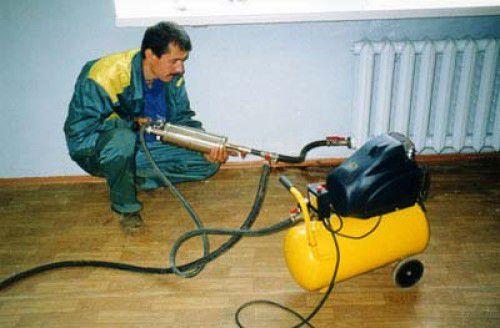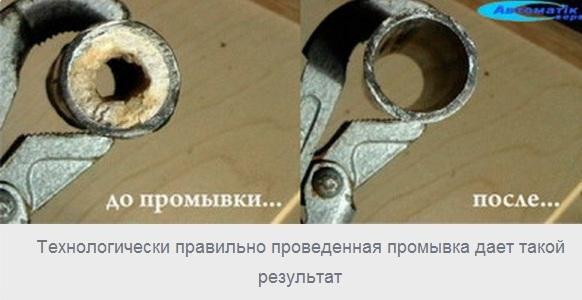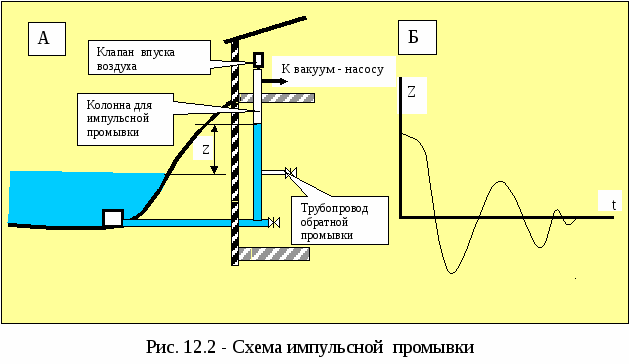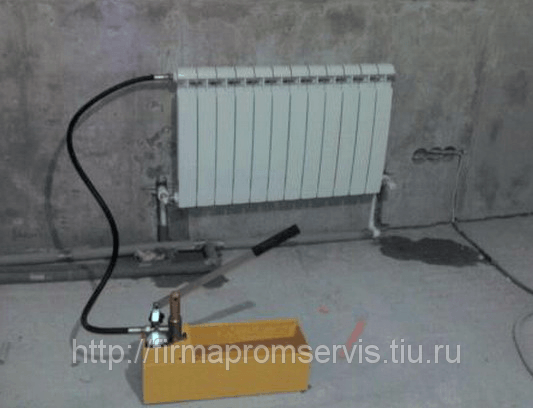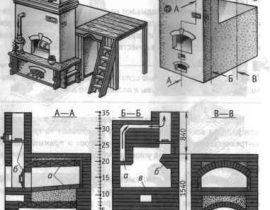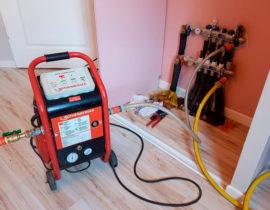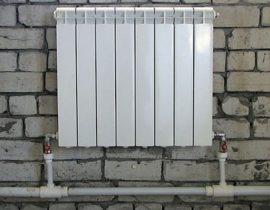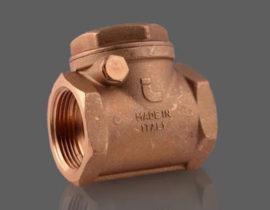Life in a private house in the bosom of nature is impossible without a high-quality and reliable heating system. But the autonomous heating system in a private house is a complex engineering structure that requires regular technological maintenance. In the event that due attention is not paid to such equipment, it begins to clog. This is primarily due to the fact that process fluids used in pipelines of heating systems contain many additives. With a constant flow of water, they are deposited on the walls of pipes and the internal surfaces of various devices of the heating system. All this slows down the normal movement of the coolant, and the broken-off areas of scale and sediment deposits can clog the system or cause breakdowns of the circulating pumps. To prevent emergencies, routine maintenance is carried out on the heating system, one of which is hydropneumatic flushing.
Content
Why is regular maintenance essential?
In addition to the occurrence of emergency situations, the accumulation of scale in the pipeline heating system also sharply reduces its efficiency. So, just a millimeter of scale on the inner surface of a heating radiator reduces its heat transfer by 15 percent. Accordingly, in order to achieve a normal temperature in the house, you will have to increase the power of the boiler, and therefore increase fuel costs. In order not to incur unnecessary costs, you need to clean the system.
The accumulated scale on the internal surfaces of the system has a much lower thermal conductivity than conventional metal used to make pipes. Scale is essentially a heat insulator - its thermal conductivity is 40 times less than that of metal. Even a thin layer of scale reduces the efficiency of the heating system to a minimum. Moreover, the scale enters into active interaction with the pipe metal, which leads to increased corrosion, and even to the formation of fistulas.
In order to improve the quality of the heating system, it is not necessary to wait for emergencies. Such work must be carried out regularly, usually at least once a year.
Diagnostics of the heating system
To identify the need for hydropneumatic flushing of the heating system, it is necessary to carry out an initial diagnosis. It can be carried out at home, without resorting to the services of expensive specialists. It is on the basis of the diagnostic results that it is necessary to decide on the flushing. In addition, after carrying out routine maintenance, gently subject the heating system to anti-corrosion treatment - this will reliably protect the walls of pipelines for the next operational period.
So, the main signs that your heating system needs hydropneumatic flushing are the following signs:
- Your heating boiler is making unusual sounds that you have not heard before,
- The time for the system to warm up to operating condition is significantly increased.
- One of the main features is the uneven heating of the elements of the heating system. So, if the pipeline system is hot to the touch, and the radiators are much colder, it is urgent to flush.
- An indirect sign of clogging of the heating system is an increase in energy consumption when the same temperature is reached and in the same weather outside.
How is hydropneumatic flushing carried out and what equipment is needed?
The main essence of the hydropneumatic flushing of the heating system is cleaning of the pipeline system and heating radiators with compressed air pressure. At the same time, the coolant remains in the system, that is, water. The beginning of this process dramatically increases the speed of the fluid in the system, and compressed air gives the water increased turbulence, that is, uneven movement and the formation of turbulence. From the action of a mixture of air and water, scale and deposits formed on the inner surface of the system are loosened, carried away by the water-air flow and removed from the pipes and radiators to the discharge point.
The discharge point for loosened deposits in this type of flushing is the drain pipe or a specialized tap. In the absence of these elements in the heating system, they must be cut in before cleaning.
In the event that there is an elevator in the heating system with a liquid heat carrier, it is dismantled before flushing to avoid damage.
Air is supplied to the heating system to create a powerful water-air flow with swirls from the compressor. This device should show a pressure of 0.6 MPa at the outlet. In order to prevent water from entering the compressor receiver from the system, a check valve is installed at the junction with the pipeline system.
A good compressor with a powerful and uniform air supply delivers a water-air mixture to the pipelines, which loosens and knocks down scale deposits inside the pipes. The compressor must operate in a uniform pulse mode, creating not just a constant flow of air, but a series of air-water shocks. This is how scale loosening swirls are formed.
A smart solution would be to use a compressor that can add disinfectants and cleaners to the air stream. In addition, such a device must be protected from spontaneous shutdown, be sufficiently compact and, preferably, have an alarm about the level of flushing fluid consumed and the pressure parameters displayed.
Hydropneumatic flushing methods
Even if you have the necessary equipment, you still need to take into account the individual characteristics of the heating system. The method chosen depends on many factors, including:
- whether it is an apartment building or the private sector;
- how many floors does the house have;
- what liquid was used as a coolant;
- how long ago the maintenance or cleaning was carried out;
- What material are the pipes made from?
- What year was the system installed?
Depending on all these factors, the specialist must conclude that it is necessary to choose one or another washing method.
Flow-through flushing
This method of cleaning pipelines of the heating system from slag consists in the following steps:
The heating system must be completely filled with water, leaving the air intake valve open.
After filling the system, the valve must be tightly closed.
A stream of compressed air is supplied to the system, at the same time the descent pipe is opened
Until the appearance of clean water from the drain pipe, a water-air mixture continues to be supplied to the system. Please note that the volume of the flushing mixture can be quite large, so take care of the place where the waste fluid is drained in advance.
Flushing with filling the heating system
In this case, it is necessary to carry out the following sequential operations:
- Fill the heating system with water with the valves closed.
- Compressed air is supplied through the inlet pipe with the outlet pipe closed for 5-1 minutes.
- After the air flow is stopped, the outlet pipe opens and the water-air mixture with scale removed is drained from the system.
Please note that the volume of the supplied water-air mixture is calculated individually for each heating system, depending on its volume. Otherwise, with an illiterate calculation, you can get not clean, but torn pipes.
How is pressing done?
After carrying out hydropneumatic flushing, and indeed before each heating season in an autonomous heating system, it is necessary to carry out a leak test and carry out routine maintenance to improve the tightness of pipeline connections. Day after day, the connections of your heating system wear out and in order not to get an accident with a breakthrough in the cold season of the sled, that is, the tightness of the pipes must be prepared in advance.This operation is called crimping.
Note that, in extreme cases, pressure testing can also be performed during the heating season, usually such an operation is performed after accidents on pipelines. In addition, pressure testing and monitoring of the condition of pipeline connections is also carried out at the first start-up of the system after its installation.
The production process of pressure testing of pipeline connections of the heating system consists of the following steps:
Slowly fill the system with cold water. Please note that the pressure in the system must be increased gradually, not abruptly. The level of fluid pressure in the system is controlled by a manometer. When the operating pressure of the system is reached, it remains under pressure for about half an hour. During this time, you can visually check the condition of pipelines and their connections, make sure that there is not only a leak, but even the slightest water leak. The easiest way to control seepage moisture is to place pieces of toilet paper or tissues under the joints, which will clearly show drops of water or
In addition, the state of the system is monitored by the readings of the manometer. This is done because pipelines can also leak in places inaccessible to visual control. If there is no decrease in pressure on the pressure gauge and visual signs of damage to the pipes and system, you can begin to operate it. For additional confidence, the pressure in the system can be increased by 10-15 percent above the calculated one.
Tutorial video: Hydropneumatic flushing of the heating system of a residential building

